2024 Ridler Winner: Dave and Tracey Maxwell’s “TwelveAir” ’53 Corvette Corvair Concept
Every year since 1964, hot-rod builders travel to Michigan to celebrate their craft at the Detroit Autorama. The three-day event is home to the Don Memorial Ridler Award, “the Nobel Prize of hot-rodding.” Any Autorama participant is eligible, as long as the vehicle is operable and has never appeared at any other show. The winner, announced on Sunday, is chosen from eight finalists, announced the day before and known as The Great Eight. You can read about the 2024 finalists here.
The Chevrolet Corvette was first introduced at the 1953 General Motors Motorama show at the Waldorf Astoria in New York City. The following year, a fastback Corvette concept called the Corvair, a name Chevy would later recycle for its ill-fated compact car, became one of the stars of the Motorama. Chevrolet, however, never put a fastback version of the first-generation Corvette into production. The winner of the 2024 Don Ridler Memorial Award, “the Nobel Prize of hot-rodding,” was inspired by that never-realized concept.
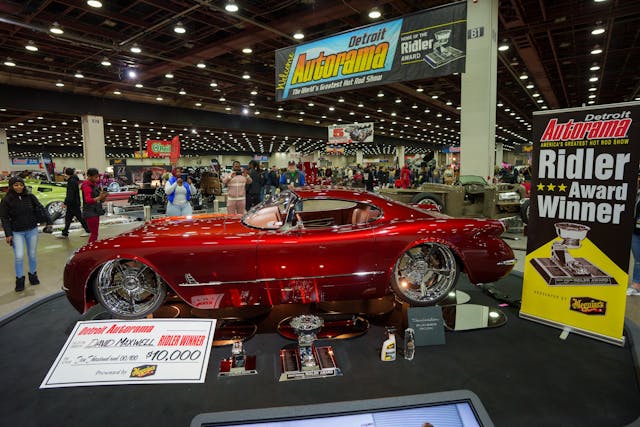
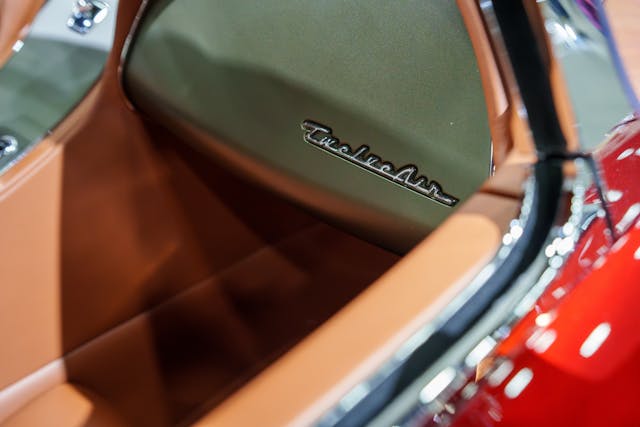

Dave and Tracey Maxwell, of Saltsburg, Pennsylvania, describe “TwelveAir” as being “loosely” based on that Motorama Corvair. Loosely is an appropriate characterization: The original concept had a fiberglass body on a ladder frame and was powered by an inline “Blue Flame” six-cylinder engine, driving through a two-speed Powerglide automatic transmission. TwelveAir has a bespoke, hand-formed aluminum unibody and is powered by a 9.2-liter V-12 engine, based on GM’s LS V-8 architecture plus an aluminum block and heads, which drives the wheels through an eight-speed automatic transaxle sourced from a C7 Corvette.
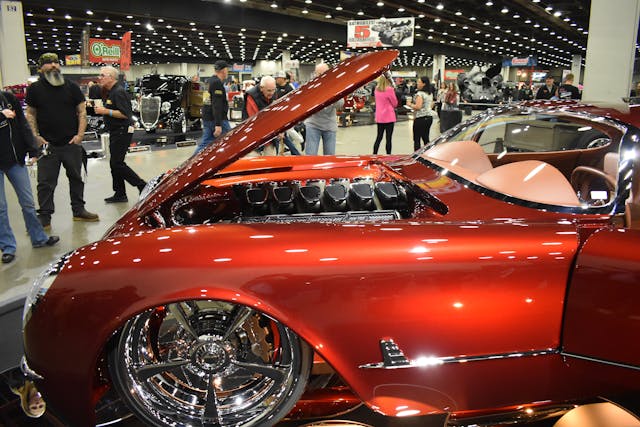
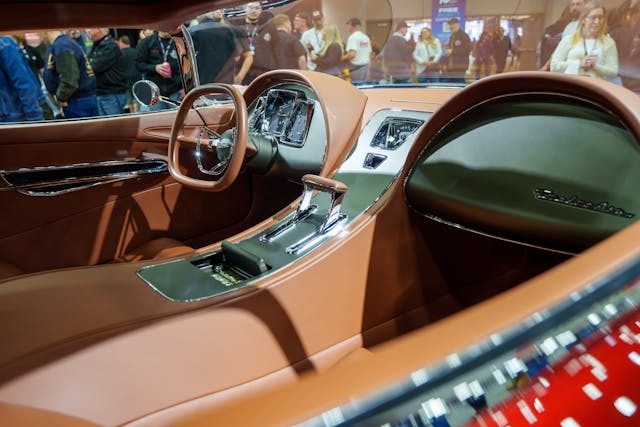

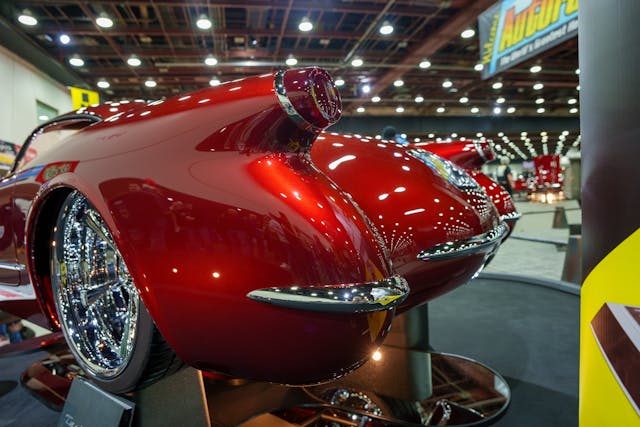
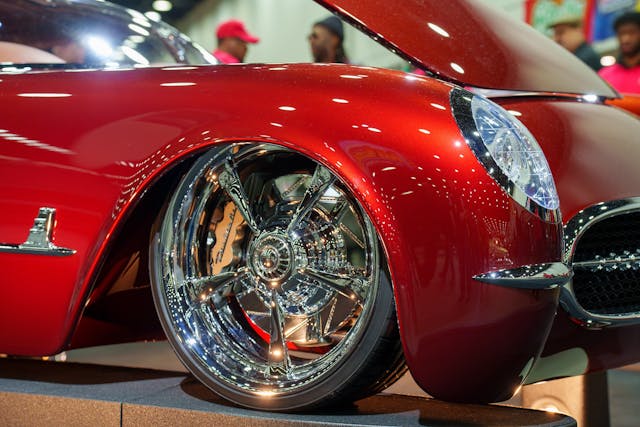
The car was built by Kindig It Design, owned by Dave Kindig, in Salt Lake City, Utah. Kindig has had a hand in designing prior finalists (aka The Great Eight) for the Ridler, but TwelveAir is his first Ridler winner. While Kindig sees the award as the culmination of 25 years of work, he won’t be resting on his laurels. At the ceremony, held during the Detroit Autorama at Huntington Place, his team members already were asking, “What’s in the shop next?”
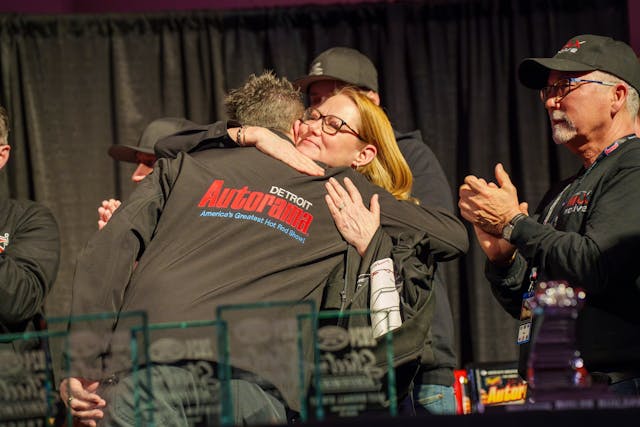
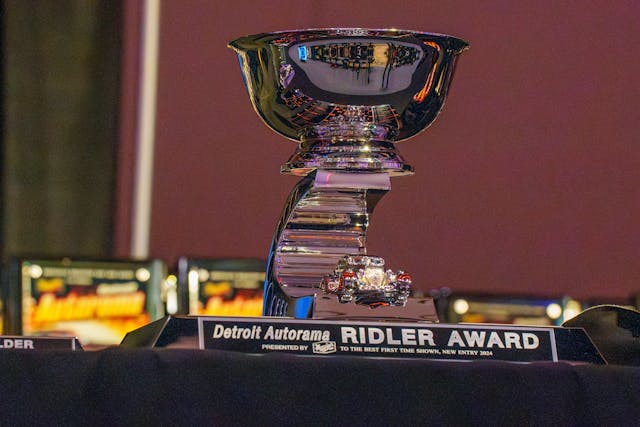
When asked what winning the award meant to him, the owner of the car, Dave Maxwell, who runs a construction company and also owns car and boat dealerships, said: “Oh my, it’s over the top. I mean … I’m so happy for the builder and the guys who built the car. I let them do their thing. I gave them some ideas that I’d like to see, and just let them go and they hit everything right on! It’s the guys. It’s all about the guys.”
Maxwell says TwelveAir is going to be a driver. “Dave Kindig knows, like with the truck he built me, and my wife’s Volkswagens, and stuff like that… they all think I’m crazy, but after we’re done showing it then it becomes a driver. We’ll change the wheels from show wheels. The disc brakes are [polished, rather than chromed] stainless steel, so we’re good.”
When asked how much he has invested in TwelveAir, Maxwell chuckled and said, “Quite a bit.”
It’s not unusual for a Ridler build to cost seven figures. TwelveAir took four and a half years to build, so it also represents a significant investment in time.
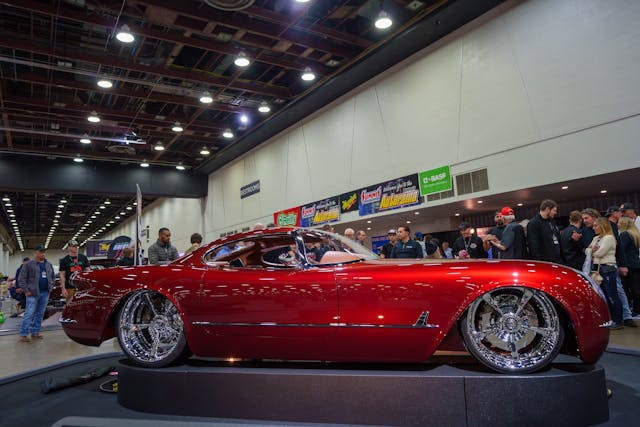
One of TwelveAir’s notable design features is an almost Zagato-like bubble roof, with a concave character line running from the backlight into the top of the windshield. Putting a crease in a glass windshield like that must also have cost quite a bit, but it is the ambition and execution of those kinds of features that make up a Ridler winner.
Tracey Maxwell said, “What does this mean to me? For him [gesturing to her husband]… I am just so happy for him. He deserves it, the team deserves it. We couldn’t have been here without them.”
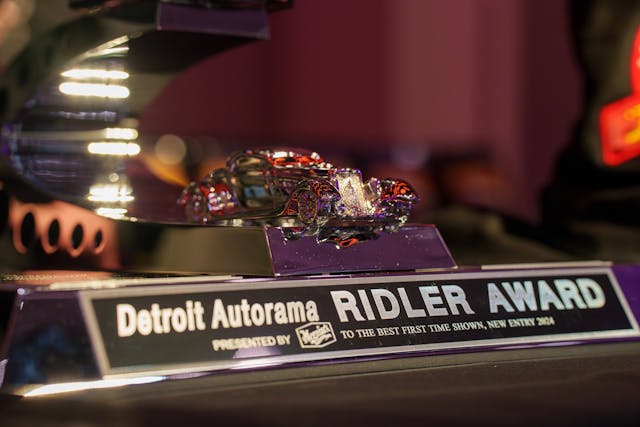
TwelveAir
Paint: AzkoNobel sprayed by Kindig
Engine: Race Cast Engineering, all alloy 9.2-liter naturally aspirated V-12
Transmission: GM 8L90E eight-speed automatic
Exhaust: Handbuilt stainless steel with three into two, two into one headers and custom 4-inch exhaust
Body: Hand-formed unibody made of 3003T0 and 6061 aluminum
Suspension: Indycar-inspired single lateral coilover cantilever pushrod
Interior: Sienna leather done by JS Custom Interiors; 3D printed dash, console, and door inserts.
Electronics: Haltec Nexux VCU with CANBus
Wheels: Kindig-designed 8×20 front, 12×21 rear
Brakes: Wilwood Aero6 calipers front, Aero4 rear; custom brake hats; hand-polished, slotted and drilled stainless-steel rotors
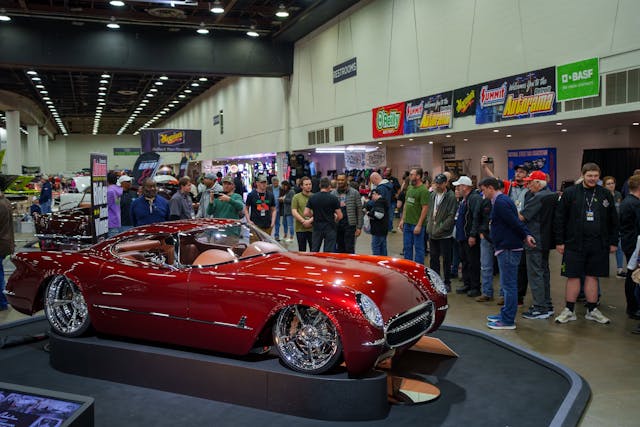
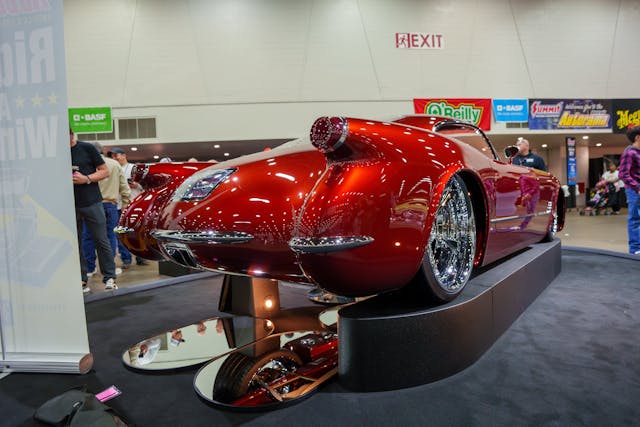
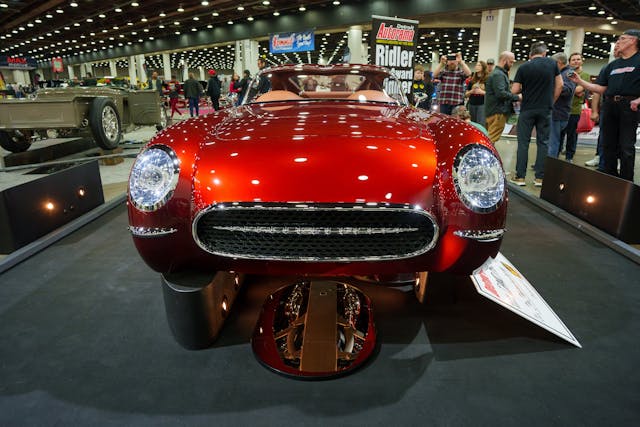
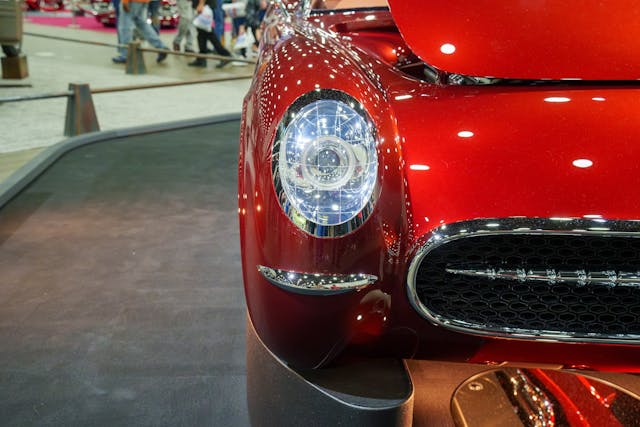
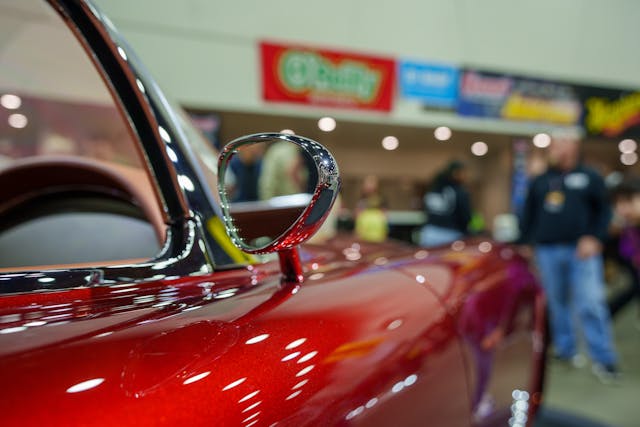
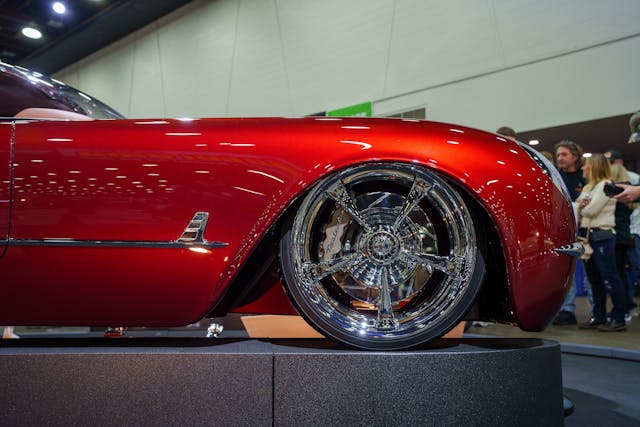
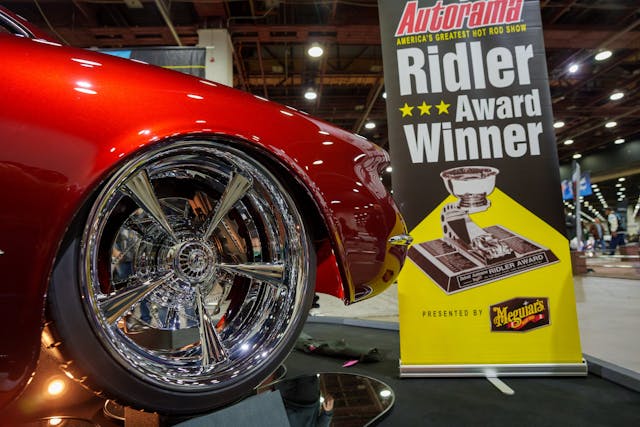

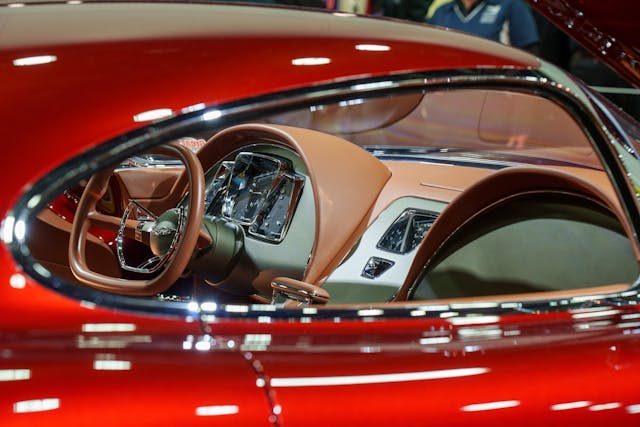
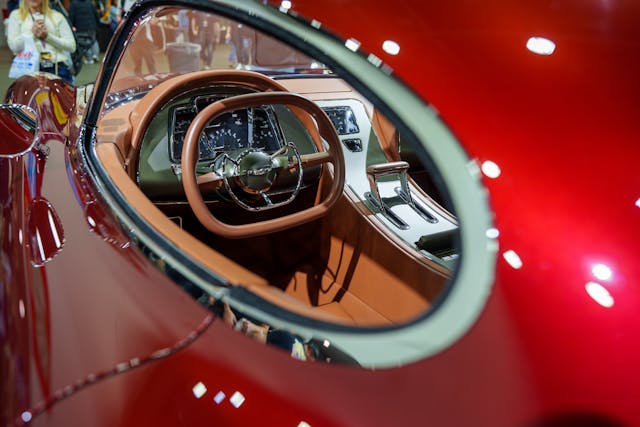
***
Check out the Hagerty Media homepage so you don’t miss a single story, or better yet, bookmark it. To get our best stories delivered right to your inbox, subscribe to our newsletters.

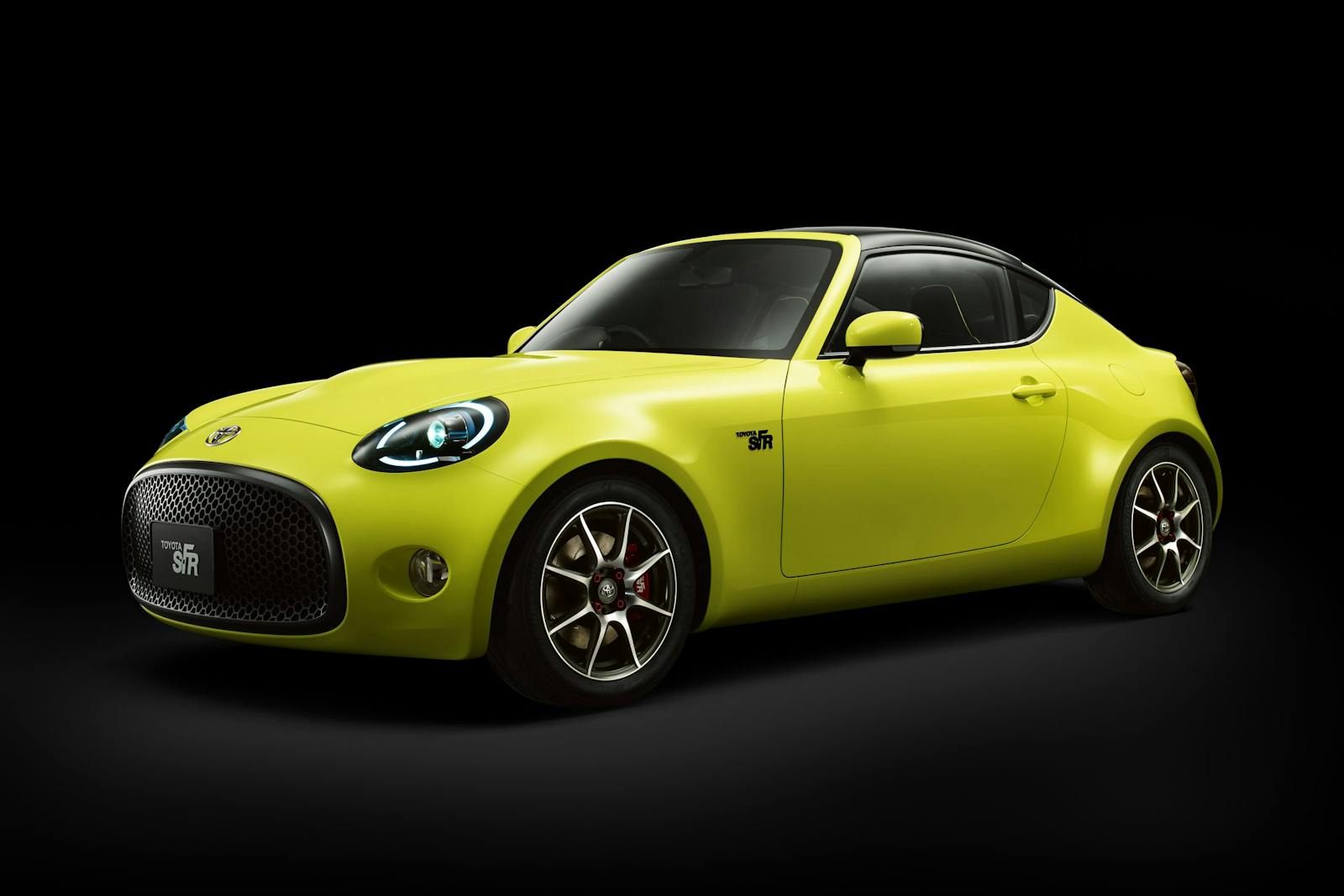

I can’t say I like it. It looks stretched out, squished on the top and wheels too big. I’ve liked past winners but this is a “meh” for me.
Love the car, not so much the wheels.
What a shame. Hot Rodding’s most prestigious award given to a kit car that never existed.
Wait, what? Isn’t hot rodding about building something uniquely yours? What is more unique that something they built from scratch (not really scratch, there are a fair amount of production parts in there.) That’s not a kit in the least.
I”m wondering why would you call it a kit car? Other than the Corvette transaxle and the V12 (which you can buy but then having a LS or LT that you can buy has never kept a car from winning), nothing appears to be off the shelf. The unibody, exterior panels, glass, and suspension are all full custom, one of a kind items.
Cool looking car. But I’ll take the original anyday .
I see the mid-2000s design language has come roaring back 🙄
Most ridiculous Corvette I have ever seen.
Like, affectionate but not quite love the car. But I’m curious; the photo showing the rear differential also shows suspension “bars” leading to the wheels. How do the wheels move up when necessary. Looks like they’re blocked by the body. Or do works of art need not be functional?
You initially stated it was a Corvair that won the 2020 for the Ridler award. I’m sorry but that’s a Corvette.
2020 was won by a 1964 Chevrolet station wagon: https://www.hagerty.com/media/events/impressive-2020-detroit-autorama-ridler-winners-name-says-it-all/
This year was a Corvette Corvair Concept. You can read some of the history here: https://www.hagerty.com/media/car-profiles/chevys-funky-corvette-corvair-was-almost-a-thing/
Yes it is a beautiful car and it was restored excellently. However, it is a 1953 automobile and the 20″ and 21″ ghetto wheels make it look ridiculous. I’m all for resto-moding a vintage car but those wheels make it look like it is competing at a low-rider show. The wheels make the car look cheesy and cheap.
It’s not restored, it’s completely scratch built, and I’d say it’s not even a ’53 since the original Corvette Corvair concept was introduced in 1954.
I am pretty sure that engine is a Ryan Falconer V12, a friend has one in a 3/4 scale P51, puts out about 750HP
The engine is by Race Cast Engineering in Australia and is based on LS architecture and parts. The Falconer V12 is based on the earlier Small Block Chevy.
Wow – another Corvette! Pre-1963 Corvettes at a car show are so boring because they are so common and so artificially hyped up. There were so many other beautiful, unique auto masterpieces at that show that should have won.
Shame on all you negative comment people. Simply appreciate all that work. “If you can’t say anything nice, don’t say anything at all!”
I’d really like to see that engine and know a lot more about it! I get the custom cast block, but it’s got to have custom cast heads and a crank also. Well, maybe they could cut up some heads and weld them together, that’s been done…
Breathtaking, just breathtaking!
This is where the industry is going. I do a lot of consulting with builders and people looking for the best shop to do the job. More clients are looking at coachbuilt style vehicles and will pay money for the best. 7 figure builds are becoming commonplace.